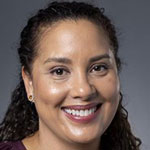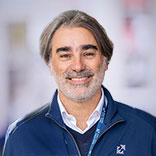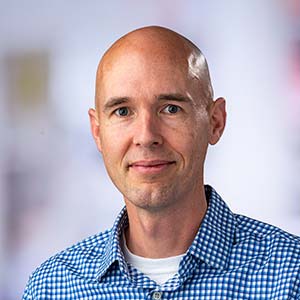Since 2006, the Cord Blood Transplant (CBT) Program at Fred Hutch Cancer Center has pioneered research on alternative stem cell sources to cure blood cancers and other blood diseases when traditional donors are not available. The CBT Program has performed more than 700 transplants using cord blood and haploidentical (half matched) donors in patients ranging from six months to 75 years old and champions efforts to improve donor accessibility for patients who do not have a traditional donor match (typically with a blood relative or found through a donor registry).
Directed by Filippo Milano, MD, PhD, the program investigators are leaders in hematopoietic stem cell research who collaborate across Fred Hutch departments – and with collaborators nationally and internationally – to improve outcomes for alternative donor sources. The CBT Program has made significant advances by improving conditioning regiments, optimizing post-transplant infection prevention, and reducing the time to engraftment.
Addressing Stem Cell Transplant Access

Blood stem cell transplantation (SCT), a therapy pioneered by Fred Hutch, is a potentially lifesaving procedure for individuals with certain cancers or other diseases that affect the blood and immune systems. The process for an SCT requires a high degree of matching for immune system genetic markers, called HLAs, between the donor and recipient to function properly. The first choice for a donor is typically a matched sibling, which occurs in about 25–30% of cases. When a sibling match is not available, patients may rely on unrelated donors identified through national and international bone marrow registries. Match rates can vary based on genetic background, and as a result, the likelihood of finding a suitable donor is not the same for all individuals. According to the National Marrow Donor Program (NMDP), the chances of finding a fully matched unrelated donor are approximately:
- White patients of European descent: 77%
- Hispanic or Latino patients: 46%
- Asian or Pacific Islander patients: 41%
- Black or African American patients: 29%
These differences reflect the complex relationship between genetics and donor availability and highlight the importance of continuing efforts to grow and diversify donor registries.
The CBT Program’s recent demographic breakdown of patients receiving an umbilical cord transplant at Fred Hutch continues to show that more than 40% of our recipients identify with a race other than white. Typically, individuals who are not white make up only 19% of clinical research populations in the US. With over 40% of Americans belonging to a racial or ethnic minority group, according to data from the US Census Bureau, we work to increase fair clinical research practices, curative approaches and improvements in alternative treatments and outcomes for all cancer patients.

Research team looks at cells under microscope

Technician preps plasma for storage

Technician stores cord blood samples in –80-degree Celsius freezer for research use
Expanding Access with Alternative Methods
As a physician-scientist at Fred Hutch and UW Medicine, Dr. Milano’s current research focuses on two innovative and increasingly accessible alternative donor sources for blood stem cell transplants: cord blood and haploidentical donors.
Patient Highlights

Alexes Harris
Alexes Harris, a professor of Sociology at the University of Washington, is a survivor of myelodysplastic syndrome (MDS). In 2016, after finding out that she did not have a matched sibling donor or one identified from the registry, Alexes received a lifesaving cord blood transplant from Dr. Milano. She now is an advocate for increasing donor representation.
Meet Our Team

Filippo Milano, MD, PhD
Dr. Milano's research is focused on improving the outcomes for cord blood transplant recipients. He has carried out pivotal analyses of outcomes using cord blood versus conventional stem cell sources. His goal is to expand the alternative donor program with an emphasis on identifying novel regimens/stem cell source combinations that are disease specific and can reduce post-transplant mortality and relapse. Dr. Milano holds the Endowed Chair in Cord Blood Research.

Ann Dahlberg, MD
Dr. Dahlberg is a clinical scholar focused on the long-term care and outcomes of patients receiving alternative-donor transplants. She also has a specific interest in the use of our non-HLA matched expanded cell product as a supportive-care measure in pediatric patients.

Corinne Summers, MD
Dr. Summers' research is focused on the development of cellular therapy for leukemia. Specifically, the development of T-cell therapies that potentially prevent relapse of acute lymphoblastic leukemia in patients who received cord blood transplants. She is engineering cord blood T cells to target leukemia cells. Her goal is to create engineered T cells that can kill residual leukemia cells after a patient has received a cord blood transplant.

Brandon Hadland, MD, PhD
Dr. Hadland's lab investigates the origins of hematopoietic stem cells, which give rise to blood and immune cells. The lab explores how biological signals regulate stem cell development and how these signals may also contribute to leukemia formation and relapse. Their research aims to develop innovative methods for engineering and expanding hematopoietic stem cells for transplantation and gene therapy, as well as to identify strategies for the early detection and prevention of childhood leukemias.
Contact Us
Jenna Pedersen, Project Manager
Mailing Address
Fred Hutchinson Cancer Center
Cord Blood Transplant Program
Mail Stop MD-B306
1100 Fairview Ave. N.
PO Box 19024
Seattle, WA 98109-1024